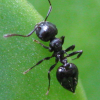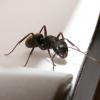- Formiculture.com
- Forums
- Gallery
- Members
- Member Map
- Chat

Hibernation- First Time Questions
Started By
Major
, Sep 5 2018 3:07 PM
6 replies to this topic
#1
 Offline
-
Posted September 5 2018 - 3:07 PM
Offline
-
Posted September 5 2018 - 3:07 PM
Ok so I know TA just started a thread on this but i have some more questions on hibernation
It's my first year antkeeping and I love it. It's all been mostly easy so far, but here comes hibernation. Now, I basically have no idea whatsoever on to how to hibernate my ants. Heres what I think I'll be hibernating this year;
-Crematogaster Lineolata, 10 workers, Drew's Starter Formicarium
-Camponotus Pennsylvanicus, 50 workers, Omni Nest Large (AC)
-Nyladeria (Flavipes?), under 10 workers, Test Tube
-Formica Subserica, 10+ workers, Test Tube
-Tetramorium Immigrans, Brood, Test Tube
-Tapinoma Sessile, 1 worker, Test Tube
-Lasius Neoniger, Brood, Test Tube
-Lasius (Brevicornis?), No Brood, Test Tube
Now as you see, I have a fair number of ants. Now, how do I hibernate them all? Should I buy a Mini Fridge? I know almost NOTHING about hibernation and even need to know the basics.
Thank you so much!
It's my first year antkeeping and I love it. It's all been mostly easy so far, but here comes hibernation. Now, I basically have no idea whatsoever on to how to hibernate my ants. Heres what I think I'll be hibernating this year;
-Crematogaster Lineolata, 10 workers, Drew's Starter Formicarium
-Camponotus Pennsylvanicus, 50 workers, Omni Nest Large (AC)
-Nyladeria (Flavipes?), under 10 workers, Test Tube
-Formica Subserica, 10+ workers, Test Tube
-Tetramorium Immigrans, Brood, Test Tube
-Tapinoma Sessile, 1 worker, Test Tube
-Lasius Neoniger, Brood, Test Tube
-Lasius (Brevicornis?), No Brood, Test Tube
Now as you see, I have a fair number of ants. Now, how do I hibernate them all? Should I buy a Mini Fridge? I know almost NOTHING about hibernation and even need to know the basics.
Thank you so much!
- rbarreto likes this
#2
 Offline
-
Posted September 5 2018 - 3:36 PM
Offline
-
Posted September 5 2018 - 3:36 PM
Truly depends on where the ant were caught/from most camponotus need to hibernate here in the bay area we don't really have a winter so queens just tend to stop laying etc, location of where you got your queens would help out in more aid
#3
 Offline
-
Posted September 5 2018 - 4:26 PM
Offline
-
Posted September 5 2018 - 4:26 PM
Truly depends on where the ant were caught/from most camponotus need to hibernate here in the bay area we don't really have a winter so queens just tend to stop laying etc, location of where you got your queens would help out in more aid
Camponotus- Forest, Rochester, NY. Forest
Crematogaster- Ulster County, NY. N/A
Nylanderia- NYC.N/A
Formica- Rochester, NY. Street.
Tetra- NYC. N/A
Tapinoma- Rochester, NY, under trees next to a creek on a sandy area, dug up.
Neoniger- Rochester, NY, blacklight next to forest
Brevicornis- Rochester, NY, blacklight next to forest
#4
 Offline
-
Posted September 6 2018 - 4:53 AM
Offline
-
Posted September 6 2018 - 4:53 AM
I don't want to start another topic so I hope you don't mind me slipping a couple questions in.
How often do you check the tubes weekly or biweekly?
Do you have to rush to check them so they don't warm up?
Do you think a wine cooler is safer then an older mini fridge?
I've been reading up on all this but I'd like to make sure I understand what I've read before doing it this first year.
- rbarreto likes this
#5
 Offline
-
Posted September 9 2018 - 4:40 PM
Offline
-
Posted September 9 2018 - 4:40 PM
Just posting to bump this thread to get ANTSwers
- CampoKing and Ikerrilove like this
#6
 Offline
-
Posted September 9 2018 - 8:49 PM
Offline
-
Posted September 9 2018 - 8:49 PM
Hi guys,
Somebody made a very general guide to hibernation here:
http://www.formicult...nation-updated/
Also, I think a wine cooler that has an adjustable thermostat with the necessary range for ants (uncommon!) is the best way to hibernate most colonies.
Several models, such as the Kenmore Wine Chiller 9924 or the Insignia NS-WC29SS9, has a temperature range from mid sixties down to 41F. That would work perfect for most species, and this is the way I plan to hibernate my colonies later this year.
My biggest belief about ant hibernation, strictly from a science perspective, is that ants should be eased into hibernation with gentle weekly temp drops, say from 65 to 45 over 8 weeks. That's how it happens in the wild as we go from Fall to Winter, and those adjustable wine coolers can do that for us.
Somebody made a very general guide to hibernation here:
http://www.formicult...nation-updated/
Also, I think a wine cooler that has an adjustable thermostat with the necessary range for ants (uncommon!) is the best way to hibernate most colonies.
Several models, such as the Kenmore Wine Chiller 9924 or the Insignia NS-WC29SS9, has a temperature range from mid sixties down to 41F. That would work perfect for most species, and this is the way I plan to hibernate my colonies later this year.
My biggest belief about ant hibernation, strictly from a science perspective, is that ants should be eased into hibernation with gentle weekly temp drops, say from 65 to 45 over 8 weeks. That's how it happens in the wild as we go from Fall to Winter, and those adjustable wine coolers can do that for us.
Edited by CampoKing, September 9 2018 - 8:52 PM.
- Ikerrilove likes this
#7
 Offline
-
Posted September 10 2018 - 4:05 PM
Offline
-
Posted September 10 2018 - 4:05 PM
Camponotus is correct, easing them into it over a given period of time is the best way to do it. Last year, at the end of November, I moved all of my colonies from the house to my garage where the temp was 40-50ish degrees. About three weeks later I moved them into my fridge in the garage. I kept a thermomometer in it with a remote display so I could keep an eye on the temp. It ranged from 34 degrees to 38 degrees. One thing that most people forget is that most ground dwelling ants burrow down to temps just above freezing, so don't let them go below 33 degrees just to be safe, or they could freeze. They may or may not be able to tolerate it, but it's not worth the risk.
I'll also point out that I hibernated all of my colonies with their brood in their various stages from egg to pupae. About half of the brood survived. It would have been more but I kept my colonies too moist and the larvae and pupae drowned.
Moisture is another important thing to consider when hibernating your colonies. You don't want them to dry out, and you don't want them to get too wet like I mistakenly did. After I figured out what I did, I just put some wet gotten balls in my formicarium and kept them moist. I had to dampen them every couple weeks. If you have ants in test tubes you don't need to do all of that, they'll be fine hibernating in their tubes.
Lastly, if your colonies are young, only hibernate them for 60 days. I pulled mine out of hibernation last year just a tick under 60 days because I wasn't confident that they could handle the full duration. With that said, they did very well and you would never know that they were pulled out early. If you think about it, it's similar to an early spring for them.
Hope that helps, and for the record I live in northern MI so winters are similar to yours.
I'll also point out that I hibernated all of my colonies with their brood in their various stages from egg to pupae. About half of the brood survived. It would have been more but I kept my colonies too moist and the larvae and pupae drowned.
Moisture is another important thing to consider when hibernating your colonies. You don't want them to dry out, and you don't want them to get too wet like I mistakenly did. After I figured out what I did, I just put some wet gotten balls in my formicarium and kept them moist. I had to dampen them every couple weeks. If you have ants in test tubes you don't need to do all of that, they'll be fine hibernating in their tubes.
Lastly, if your colonies are young, only hibernate them for 60 days. I pulled mine out of hibernation last year just a tick under 60 days because I wasn't confident that they could handle the full duration. With that said, they did very well and you would never know that they were pulled out early. If you think about it, it's similar to an early spring for them.
Hope that helps, and for the record I live in northern MI so winters are similar to yours.
- Ikerrilove likes this
0 user(s) are reading this topic
0 members, 0 guests, 0 anonymous users
















